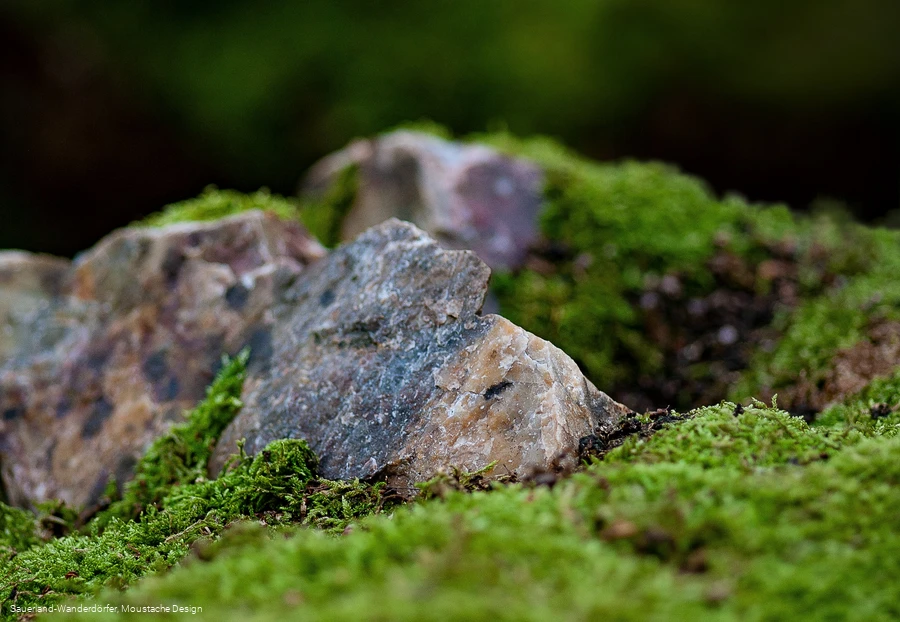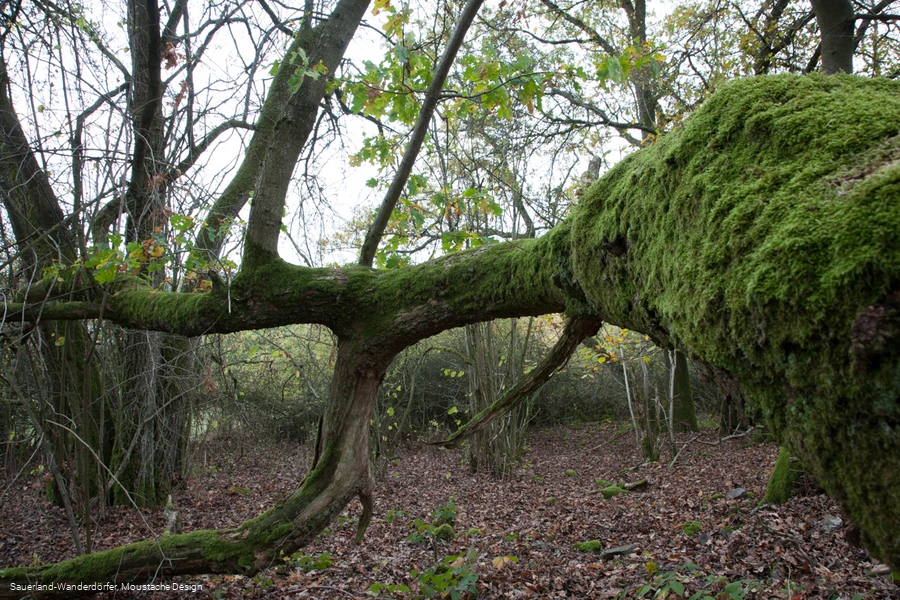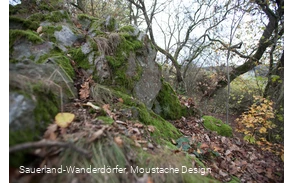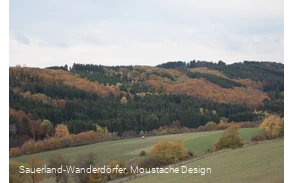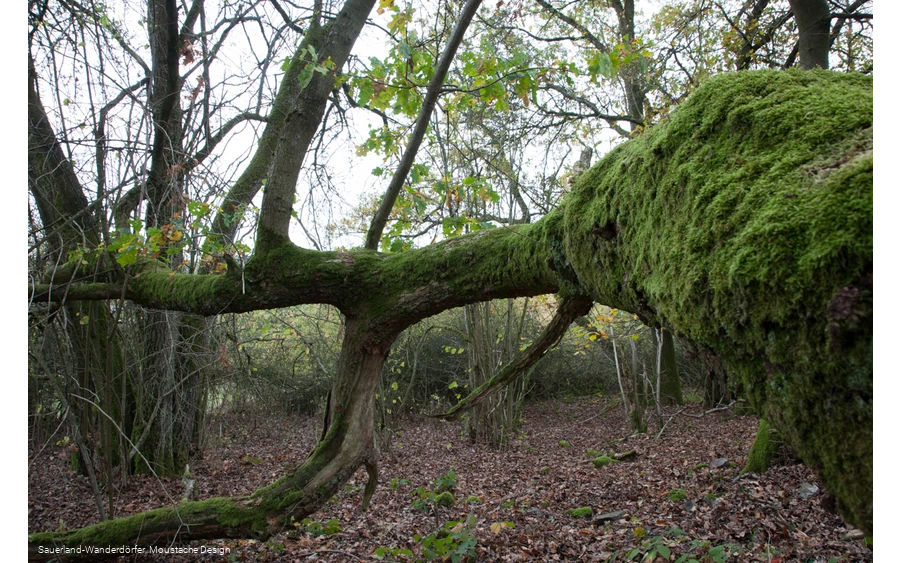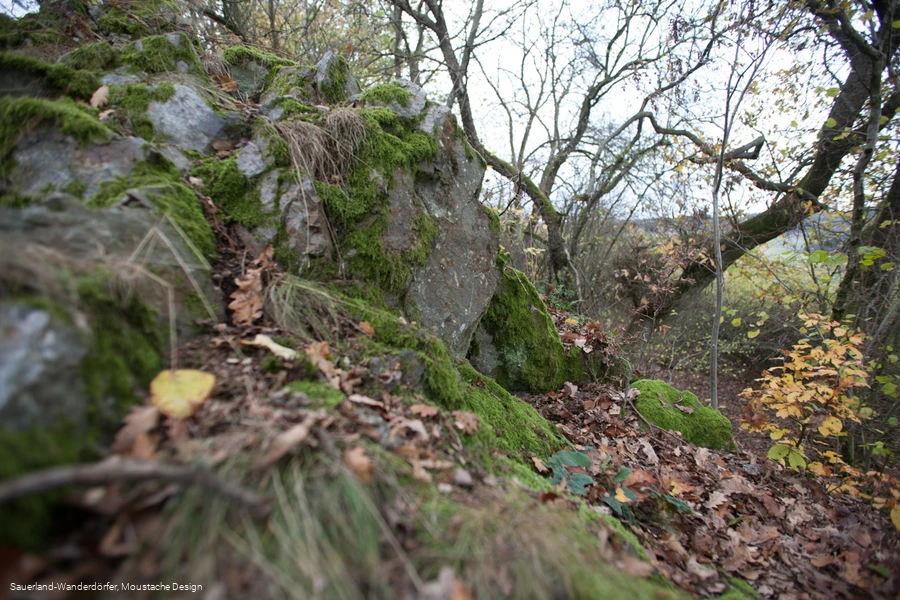Quarzklippen
Medebach-Dreislar (51.150230 | 8.679418)
Man and creation
Rock formation overgrown with old oaks and cherry trees. Stone evidence of a crevasse that formed 50 million years ago and stretches from Dreislar to Poland.
On the Quarzklippen above Dreislar, I experience creation at speed. Gerhard Brocke, a woodturner by profession and vocation and, in one of his many honorary posts, local preservationist, provides the subtitles.
As we work our way through bushes and moss-covered boulders along the cliff edge, the 70-year-old talks about 70 million years of evolution as naturally as if he were commenting on pages in the family album. A story full of tensions and divisions. It begins with the collision of the continental plates. It tore a kilometer-long fault line in the earth's crust. It runs right through where we are standing right now. "Deep inside the earth, hot solutions at 450 degrees were bubbling away," explains Brocke. "They were under great pressure and shot up through fissures like geysers." A chemical process then began, in which the participants (sulphur, oxygen, water and barium) became very hot. When the tempers cooled, barite remained: beautiful quartz crystals.
A divine jewelry designer created these stones. Some look like jewels sprinkled with grains of gold. Others look like fine pâtés, chocolates and pastries. Or like miniature landscapes with caves, gorges and terraces. An amethyst surrounded by quartz shows shark's teeth. I see stones that appear rolled, curved, enclosing, rising up. These stones are alive, yes, they speak. I am overcome by a feeling of awe. A sense of wonder that knows without knowing. An inner bow to something so much older and greater.
Evolution does not pause. Gerhard Brocke gallops on through the history of the earth. He talks about how tectonic movements elsewhere in the world filled in and closed the crystal-rich fissures. "But not in Dreislar! A fissure remained open here. A small miracle. In a small area of 450 by 350 meters, the crystals lay just below the surface." That's where we're standing right now. Not much grows on the Quarzklippen, the trees are rather small and curved, only frugal mosses and grasses cover the ground. "It looks like it has for thousands of years. Man has never intervened here."
But further down, there has been digging. "In our area, probably since Celtic times. But that's not certain." It only really started at the beginning of the 20th century. Barite was discovered as an additive for photographic paper, for white paint and for shielding rooms during X-rays.
Brocke leads me down the slope. We leave the Unterholz and enter an open space. A reddish-brown rock face lies before us. A wooden fence in front of it is a signal to eager stone collectors: Please leave it! "They started digging tunnels here in 1912." An eventful history took its course. World wars, economic crises and economic miracles intervened, sometimes hindering, sometimes helping. At times, the mine in Dreislar was considered the most modern in Europe. Technology enthusiasts came from all over the world to marvel at the ingenious system of shafts. Corridor systems on which trucks could drive on serpentines into the earth's interior. "Ten years ago, the deposits were exhausted," recalls Brocke. The tunnels and passages were filled in and the underground treasure chamber closed.
At the same time, a crystal world was created above ground. This time, people were the creators. Brocke and like-minded people founded a support association, applied for money and mostly went to work themselves. The result can be seen in the building next to the church that Brocke takes me to. "Barite Museum" is written in red letters above the arched entrance gate. A bulky name on the outside, a world of wonder on the inside. Once again, I can fast-forward and rewind 70 million years. Showcases full of stone beauties. A reconstructed forge. Artificial tunnels. Brocke quotes figures like these: Trucks loaded with the heavy barite in Dreislar covered the distance earth - moon 16 times. The pride in his own history is unmistakable.
Author: Michael Gleich
An inner bow to something so much older and bigger.
Michael Gleich
The best way to reach the Quarzklippen is from the:
"Im Schwinkel" hiking parking lot
From the "Im Schwinkel" hiking parking lot, hike along the Medebacher Bergweg towards Dreislar. At Hundecke, briefly cross the Medelon country road and follow the blue high-altitude sign and the D1 heading west. At Rüdenscheid, the Höhenflug leaves us and we follow the D1 around the Linsenberg. After approx. 2 km, the small mining village of Dreislar is already in sight, now leave the path to the right via a meadow path straight downhill. This path is not signposted. At the bottom of the new path, turn left and follow the next small path to the left for a short distance until you see the small barite quarry on the left.
Here you are now close to the Quarzklippen and above the Dreislar barite quarry. On the way back to the village, follow the road past the small church. The "Zum Burghof" inn is on the left and the barite museum is on the right. Continue straight on, slightly uphill, past the Friedfof and along the Sleeping Beauty Trail to the wellness rest area.
For further information, please contact the Medebach Tourist Information Office: Tel: 02982 / 9218610, e-mail: info@medebach-touristik.de
Did you know...?
When the Alps were formed 50 million years ago, a fissure opened up here that stretches all the way to Poland.
